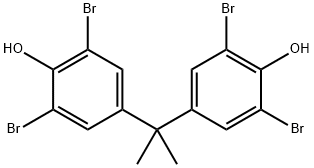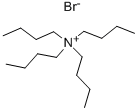Carbon tetrabromide
Synonym(s):Carbon tetrabromide
- CAS NO.:558-13-4
- Empirical Formula: CBr4
- Molecular Weight: 331.63
- MDL number: MFCD00000117
- EINECS: 209-189-6
- SAFETY DATA SHEET (SDS)
- Update Date: 2025-09-25 17:15:13

What is Carbon tetrabromide?
Description
Carbon tetrabromide is considered a highly toxic chemical, may be fatal if inhaled, swallowed, or absorbed through skin. It is metabolized in vitro to produce carbon monoxide but the in vivo significance has not been established. Under anaerobic reducing conditions it forms complexes with ferrous cytochrome P450. Carbon monoxide is detected as a metabolic product of the interaction. Carbon tetrabromide’s production and use in organic syntheses may result in its release to the environment through various waste streams. Carbon tetrabromide has been isolated from red algae, Asparagopsis toxiformis, found in the ocean near Hawaii. It was detected in water from treated chlorinated seawater used for drinking at oil platforms. Occupational exposure to carbon tetrabromide may occur through inhalation and dermal contact with this compound at workplaces where it is produced or used. The general population may be exposed to carbon tetrabromide via ingestion of drinking water. Acute exposures to high concentrations may cause upper respiratory tract irritation and injury to lungs, liver (hepatotoxicity) and kidneys (nephrotoxicity). Chronic exposure effects at very low levels will be almost entirely limited to liver injury. It is a potent lachrymator even at low exposure concentrations. Although carbon tetrabromide may release bromine ions during metabolism, clinical bromism is not expected to occur.
Description
Carbon tetrabromide (CBr4) is most commonly used as a reagent for converting alcohols to bromides in Appel reactions. Carbon tetrabromide is generally not used as a solvent, whereas its chloro analogue, carbon tetrachloride (CCl4), sees frequent use as a solvent.
Chemical properties
Crystalline colorless
Chemical properties
Carbon tetrabromide, is a colorless powder, white crystalline solid, or yellow-brown crystals. Slight odor
The Uses of Carbon tetrabromide
Carbon tetrabromide is used to a limited extent as a chemical intermediate. It has been isolated from red algae, Asparagopsis toxiformis, found in the ocean near Hawaii.
The Uses of Carbon tetrabromide

The SM (6.8 g, 0.036 mol) was taken up in DCM (275 mL) and treated with PPh3 (10.36 g) and CBr4 (13.1 g). The reaction mixture was stirred at RT for 90 min, after which time the solvent was concentrated to a volume of about 50 mL (precipitation occurs). The slurry was added to a pad of silica gel eluting with 20% EtOAc/hexane. Fractions containing the product (least polar) were combined and concentrated to provide the product as a viscous syrup. [6.2 g, 69%]
The Uses of Carbon tetrabromide
Organic synthesis.
The Uses of Carbon tetrabromide
Used to a limited extent as an intermediate in organic synthesis
Definition
ChEBI: A one-carbon compound substituted by 4 bromo groups.
General Description
A colorless crystalline solid. Much more dense than water and insoluble in water. Toxic by ingestion. Vapors are narcotic in high concentration. Used to make other chemicals.
Air & Water Reactions
Insoluble in water.
Reactivity Profile
Carbon tetrabromide is incompatible with the following: Strong oxidizers, hexacyclohexyldilead, lithium .
Hazard
A poison; narcotic in high concentration. Liver damage, eye, skin, and upper respiratory tract irritant.
Health Hazard
Highly toxic, may be fatal if inhaled, swallowed or absorbed through skin. Avoid any skin contact. Effects of contact or inhalation may be delayed. Fire may produce irritating, corrosive and/or toxic gases. Runoff from fire control or dilution water may be corrosive and/or toxic and cause pollution.
Fire Hazard
Non-combustible, substance itself does not burn but may decompose upon heating to produce corrosive and/or toxic fumes. Containers may explode when heated. Runoff may pollute waterways.
Safety Profile
Poison by subcutaneous and intravenous routes. Narcotic in high concentration. Mixture with Li particles is an impact-sensitive explosive. Explodes on contact with hexacyclohexylddead. When heated to decomposition it emits toxic fumes of Br-. See also CHLORINATED HYDROCARBONS, ALIPHATIC.
Potential Exposure
CBr4 is used in organic synthesis.
First aid
If this chemical gets into the eyes, remove anycontact lenses at once and irrigate immediately for at least15 min, occasionally lifting upper and lower lids. Seek medical attention immediately. If this chemical contacts theskin, remove contaminated clothing and wash immediatelywith soap and water. Seek medical attention immediately. Ifthis chemical has been inhaled, remove from exposure,begin rescue breathing (using universal precautions, including resuscitation mask) if breathing has stopped and CPR ifheart action has stopped. Transfer promptly to a medicalfacility. When this chemical has been swallowed, get medical attention. Give large quantities of water and inducevomiting. Do not make an unconscious person vomit.Medical observation is recommended for 24-48 h afterbreathing overexposure, as pulmonary edema may bedelayed. As first aid for pulmonary edema, a doctor orauthorized paramedic may consider administering a corticosteroid spray.
Environmental Fate
Carbon tetrabromide inhibits protein synthesis and causes lipid peroxidation, both of which may be involved in cell injury or death mediated by free radicals.
Storage
Color Code—Green: General storage may be used.Prior to working with carbon tetrabromide you should betrained on its proper handling and storage. Store in tightlyclosed containers in a cool, well-ventilated area away fromoxidizers and other incompatible materials listed above.
Shipping
UN2516 Carbon tetrabromide, Hazard Class: 6.1; Labels: 6.1-Poisonous materials.
Purification Methods
Reactive bromide is removed from CBr4 by refluxing with dilute aqueous Na2CO3, then steam distilling, crystallising from EtOH, and drying in the dark under vacuum. [Sharpe & Walker J Chem Soc 157 1962.] It can be sublimed at 70o and low pressure. [Beilstein 1 IV 85.]
Toxicity evaluation
Carbon tetrabromide is a colorless nonflammable solid at room temperature. It is insoluble in water, but soluble in several organic solvents such as alcohol, ether, and chloroform. Its specific gravity is 3.42, melting point is 90°C, boiling point is 189°C, and vapor pressure is 0.72 torr at 25°C. Production and use of carbon tetrabromide may result in its release in the environment through various hazardous waste streams. Carbon tetrabromide is expected to have very high mobility in soil and volatilizes slowly from dry soil surface. Its biodegradation is expected to be slow and to exist solely as a vapor in the ambient atmosphere. It is not expected to adsorb to suspended solids and sediment in the water column. Its potential for bioconcentration in aquatic organisms is moderate.
Incompatibilities
Incompatible with oxidizers (chlorates, nitrates, peroxides, permanganates, perchlorates, chlorine, bromine, fluorine, etc.); contact may cause fires or explosions. Keep away from alkaline materials, strong bases, strong acids, oxoacids, epoxides, lithium and hexacyclohexyldiilead, since violent reactions may occur.
Waste Disposal
Purify by distillation and return to suppliers.
Properties of Carbon tetrabromide
| Melting point: | 88-90 °C(lit.) |
| Boiling point: | 190 °C(lit.) |
| Density | 3,42 g/cm3 |
| vapor pressure | 40 mm Hg ( 96 °C) |
| refractive index | 1.5942 |
| Flash point: | 190°C |
| storage temp. | Store below +30°C. |
| solubility | soluble in Chloroform |
| form | Crystalline Solid |
| appearance | Colorless to yellow-brown crystals |
| color | White to off-white |
| Water Solubility | insoluble |
| BRN | 1732799 |
| Dielectric constant | 7(22.0℃) |
| Exposure limits | ACGIH: TWA 0.1 ppm; STEL 0.3 ppm NIOSH: TWA 0.1 ppm(1.4 mg/m3); STEL 0.3 ppm(4 mg/m3) |
| CAS DataBase Reference | 558-13-4(CAS DataBase Reference) |
| NIST Chemistry Reference | Carbon tetrabromide(558-13-4) |
| EPA Substance Registry System | Carbon tetrabromide (558-13-4) |
Safety information for Carbon tetrabromide
| Signal word | Danger |
| Pictogram(s) |
 Corrosion Corrosives GHS05  Exclamation Mark Irritant GHS07 |
| GHS Hazard Statements |
H302:Acute toxicity,oral H315:Skin corrosion/irritation H318:Serious eye damage/eye irritation H335:Specific target organ toxicity, single exposure;Respiratory tract irritation |
| Precautionary Statement Codes |
P261:Avoid breathing dust/fume/gas/mist/vapours/spray. P264:Wash hands thoroughly after handling. P264:Wash skin thouroughly after handling. P280:Wear protective gloves/protective clothing/eye protection/face protection. P301+P312:IF SWALLOWED: call a POISON CENTER or doctor/physician IF you feel unwell. P302+P352:IF ON SKIN: wash with plenty of soap and water. P305+P351+P338:IF IN EYES: Rinse cautiously with water for several minutes. Remove contact lenses, if present and easy to do. Continuerinsing. |
Computed Descriptors for Carbon tetrabromide
Carbon tetrabromide manufacturer
BTC pharm India
JSK Chemicals
New Products
4,4-Difluoropiperidine hydrochloride tert-butyl 9-methoxy-3-azaspiro[5.5]undecane-3-carboxylate Indole Methyl Resin N-Isopropylurea N,N-Dicyclohexylcarbodiimide(DCC) MELDRUMS ACID 5-METHYLISOXAZOLE-4-CARBOXYLIC ACID Magnessium Bis glycinate Zinc ascorbate 1-bromo-2-butyne 2-acetamidophenol 9(10H)-anthracenone Erythrosin B, 4-Piperidinopiperidine 2-((4-morpholinophenylamino) (methylthio) methylene) malononitrile 2,4-dihydroxybenzaldehyde 3-(4-morpholinophenylamino)-5-amino-1H-pyrazole-4-carbonitrile Methyl 2-methylquinoline-6-carboxylate 2,6-dichloro-4-nitropyridine 4-Bromo-2-chlorobenzonitrile 2-(benzylamino)acetic acid hydrochloride 4-(tert-Butoxycarbonylamino)but- 2-ynoic acid 3,4-dihydro-2H-benzo[b][1,4]dioxepine 1-Phenyl-1-cycloprppanecarboxylicacidRelated products of tetrahydrofuran








You may like
-
 Tetrabromomethane 558-13-4 98%View Details
Tetrabromomethane 558-13-4 98%View Details
558-13-4 -
 558-13-4 Carbon tetrabromide, 98% 99%View Details
558-13-4 Carbon tetrabromide, 98% 99%View Details
558-13-4 -
 Carbon tetrabromide CAS 558-13-4View Details
Carbon tetrabromide CAS 558-13-4View Details
558-13-4 -
 Carbon tetrabromide, puriss CAS 558-13-4View Details
Carbon tetrabromide, puriss CAS 558-13-4View Details
558-13-4 -
 Carbon tetrabromide 97% CAS 558-13-4View Details
Carbon tetrabromide 97% CAS 558-13-4View Details
558-13-4 -
 Carbon Tetrabromide CAS 558-13-4View Details
Carbon Tetrabromide CAS 558-13-4View Details
558-13-4 -
 Tetrabromomethane CAS 558-13-4View Details
Tetrabromomethane CAS 558-13-4View Details
558-13-4 -
 558-13-4 Carbon tetrabromide 98+View Details
558-13-4 Carbon tetrabromide 98+View Details
558-13-4
